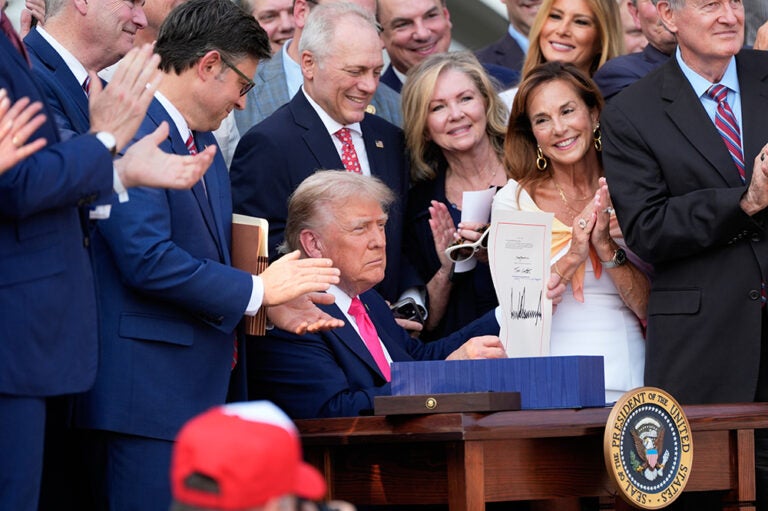This year, lawmakers face a series of significant budget decisions, including for the debt ceiling and government funding, as well as the expiration of trillions of dollars in tax cuts. Those fiscal flashpoints come against the backdrop of America’s unsustainable national debt — $36 trillion and rising.
Leaders in the House and Senate are pursuing a process called reconciliation to enact major parts of their agenda. As negotiations take shape over coming months, lawmakers should avoid the use of budget gimmicks, which can hide the true fiscal impact of legislation. And that approach holds true for appropriations and any other legislative action.
So . . . what’s a budget gimmick, and how can you spot one? Let’s look at some primary examples.
Baseline Games
Some may hear the terms “current-law” and “current-policy” baseline and wonder how the two are different. They imply very different calculations when it comes to the fiscal impact of legislation.
- A current-law baseline reflects what is written in law. Put another way, a current-law baseline shows projections for the federal budget (usually over a 10-year period) if laws governing taxes and spending generally remained unchanged. For example, if a revenue provision has a statutory expiration date, then its budgetary effects are not extended in the current-law baseline after that point.
- A current-policy baseline, on the other hand, reflects policy changes that may be expected or desired, but haven’t happened yet. This type of baseline helps illuminate what the budget would look like if current policies were held in place indefinitely, ignoring expirations scheduled under current law.
The difference between the two baseline approaches produces different perspectives on the cost of legislation, even though the ultimate impact on debt and deficits would be unchanged. For example, accounting for the expiring tax provisions in the Tax Cuts and Jobs Act of 2017 in a current-law baseline shows that when those provisions expire, the reduction in revenues stemming from those provisions would disappear from the baseline. Applying a current-policy baseline would assume that they were always going to be extended, and incorporate lower revenues into the years past expiration — in effect, ignoring their $4.6 trillion cost. No matter what the scoring convention, the $4.6 trillion would still be accrued as deficits and debt. Both baselines have value in understanding our budget outlook, but neither should be — nor, ultimately, can be — used to avoid or obscure the fiscal impact of legislation.
Unrealistic Economic Projections
Economic growth projections play a large role in estimating future deficits. Using unrealistic, overly optimistic forecasts for economic growth translates into projections of artificially higher revenues, which in turn make deficits look smaller than they are likely to be. To avoid that gimmick, lawmakers should rely on nonpartisan estimates for economic growth — including credible “dynamic” scoring estimates — from neutral scorekeepers such as the Congressional Budget Office (CBO) and the Joint Committee on Taxation (JCT).
Timing Gimmicks
When dealing with major legislation, Congress will sometimes authorize policies with a high price tag for a temporary timeframe, thereby reducing the calculated cost because the applicable years are limited. Artificially early expirations not only cause economic uncertainty for both families and businesses, they set up potentially damaging policy “cliffs” for future lawmakers to deal with. A recent example of a timing gimmick is the upcoming expiration of the individual tax title of the Tax Cuts and Jobs Act (TCJA). That legislation was enacted in 2017, and lawmakers chose to sunset large portions of it after only eight years in order to reduce the initial price tag and comply with the budget rules that applied to the legislation.
Tax Code Tricks
There are also budget gimmicks surrounding the tax treatment of income, usually involving the timing of income recognition or deductions. Shifting the timing of income to either accelerate or delay taxation is a practice often used to pull tax revenues into the budget window. For example, Roth IRA conversions generate income tax liability now, but ultimately allow tax-free accrual for a longer time. Shifting the timing of deductions can also raise tax revenues in the near term, though over time the taxes owed and collected are unchanged. Deductions for corporate pension contributions have been delayed in past legislation to increase net corporate income and therefore net corporate income tax receipts in the budget window.
Other Budget Gimmicks
In addition to the above gimmicks, which could be used to obscure the fiscal impact of legislation under budget reconciliation, there are gimmicks that are sometimes applied to other parts of the annual budget process, including discretionary spending from annual appropriations.
Getting Around the Budget Caps
The Fiscal Responsibility Act of 2023 imposes caps on appropriations for 2024 and 2025, but includes several exceptions such as spending designated as an emergency, disaster relief, and program integrity. While such carve-outs are not intended to be gimmicks, spending in those areas occasionally spikes and there is some subjectivity with respect to their uses. For example, Congress and the President both have the ability to designate emergency funding subject to qualifications; however, there is no cap on emergency spending and no definition as to what qualifies as an emergency requirement. Further, for years, Congress used the “Overseas Contingency Operations” (OCO) designation, which permitted spending in excess of the budget cap to fund military operations in Iraq and Afghanistan. Some of that spending, however, became fungible with base defense spending, allowing for increased total spending above the discretionary limit. Congress finally eliminated the OCO exception 20 years after it originated in 2001, but other opportunities to spend above the caps remain.
Mandatory Spending in Appropriation Bills (CHIMPs)
The annual budget process includes approval of a wide range of discretionary spending, funding approved on an annual basis through the appropriation process. At times, mandatory spending is also included in an appropriation bill, usually to offset the cost of other spending. Such practice is referred to as Changes in Mandatory Spending Programs, or CHIMPs, and may or may not have an actual effect on outlays; if not, the scoring approach could hide the full cost of the appropriation package.
Conclusion
As lawmakers tackle this year’s critical budget decisions, the bottom line is that there are plenty of spending and revenue options available to fully offset the cost of policies they wish to enact or extend. Whether as part of budget reconciliation or any other part of the budget process, lawmakers should avoid gimmicks like those listed above, and instead work to improve our dangerous fiscal outlook with sustainable, credible policymaking for our future.
Further Reading
How Did the One Big Beautiful Bill Act Affect Federal Spending?
Overall, the OBBBA adds significantly to the nation’s debt, but the act contains net spending cuts that lessen that impact.
What Is the Disaster Relief Fund?
Natural disasters are becoming increasingly frequent, endangering lives and extracting a significant fiscal and economic cost.
How Much Does the Government Spend on International Affairs?
Federal spending for international affairs, which supports American diplomacy and development aid, is a small portion of the U.S. budget.


